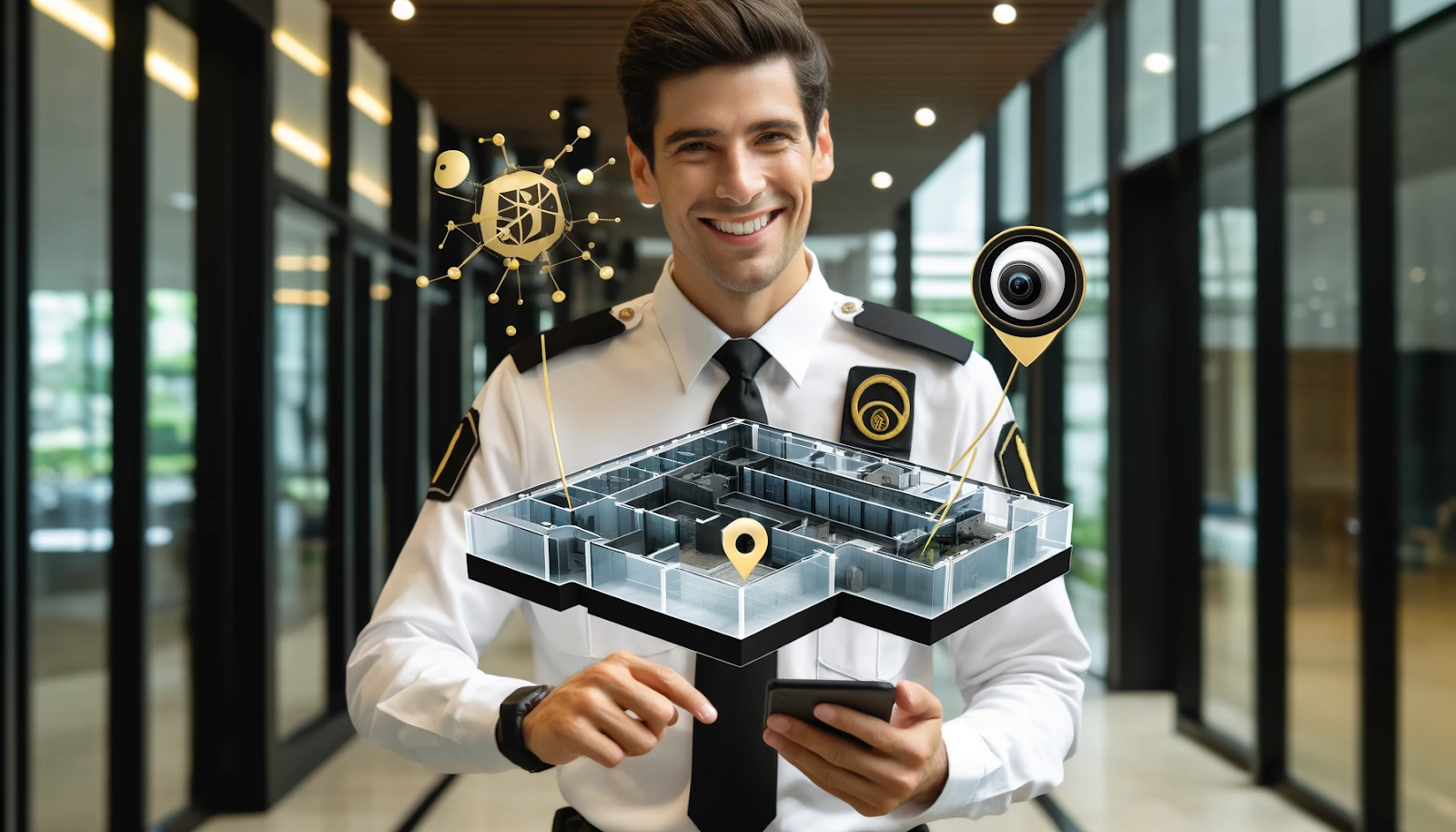The Potential of Augmented Reality to Revolutionize Security Planning and Situational Awareness
Augmented reality (AR) is transforming numerous industries, and the security sector is no exception. For property managers, chief security officers, and security company hiring managers, AR offers innovative solutions for security planning and situational awareness. By overlaying digital information onto the physical world, AR provides enhanced visibility and insights, leading to more efficient and effective security strategies. This blog explores the potential of AR in revolutionizing security planning and situational awareness.
Enhancing Situational Awareness
One of the primary benefits of AR in security is its ability to enhance situational awareness. Traditional security measures often rely on static maps, surveillance footage, and manual reporting, which can be time-consuming and prone to human error. AR, on the other hand, offers real-time, dynamic visualizations that can be accessed through smart devices or AR glasses.
- Real-Time Monitoring: Security personnel can use AR to overlay live camera feeds onto their surroundings, providing a comprehensive view of the premises. This allows for quicker identification of potential threats and more informed decision-making.
- Interactive Maps: AR can transform traditional maps into interactive, 3D models. This not only helps in understanding the layout of a property but also in planning evacuation routes, identifying blind spots, and optimizing patrol routes.
Streamlining Security Planning
AR technology can significantly streamline security planning processes. By integrating AR into security systems, property managers and security officers can visualize and simulate various scenarios to improve their strategies.
- Threat Simulation: AR allows for the simulation of different threat scenarios, helping security teams to prepare for various incidents. By visualizing these scenarios, teams can develop more robust response plans.
- Resource Allocation: AR can assist in the optimal placement of security resources such as cameras, sensors, and personnel. By visualizing coverage areas and identifying gaps, AR ensures that resources are used efficiently.
Training and Development
Training security personnel is crucial for maintaining high standards of safety. AR can enhance training programs by providing immersive, hands-on experiences.
- Virtual Drills: AR can simulate emergency situations, allowing security teams to practice their response without the risks associated with real-life drills. This leads to better preparedness and faster reaction times.
- Skill Development: AR-based training modules can help in developing specific skills such as identifying suspicious behavior, handling emergencies, and operating security equipment.
Improving Communication and Collaboration
Effective communication and collaboration are vital for successful security operations. AR facilitates better communication among security teams and other stakeholders.
- Shared Visuals: Security teams can share AR-generated visuals with each other, ensuring everyone has a clear understanding of the situation. This is particularly useful during emergencies when quick, coordinated action is required.
- Remote Assistance: Experts can provide remote assistance to on-site security personnel through AR. By overlaying instructions and guidance onto the real-world environment, remote experts can assist in resolving complex situations.
Benefits of AR for Security Planning
To summarize, here are some key benefits of using AR for security planning and situational awareness:
|
Benefit |
Description |
|
Enhanced Situational Awareness |
Real-time monitoring and interactive maps for better visibility |
|
Streamlined Security Planning |
Threat simulation and optimal resource allocation |
|
Improved Training |
Virtual drills and skill development through immersive experiences |
|
Better Communication |
Shared visuals and remote assistance for effective collaboration |
FAQs
Q: How does AR improve situational awareness for security teams? A: AR enhances situational awareness by providing real-time, dynamic visualizations of the environment, helping security teams to identify and respond to threats more efficiently.
Q: Can AR be used for training security personnel? A: Yes, AR can simulate various scenarios, allowing security personnel to practice their response in a safe, controlled environment. This improves preparedness and skill development.
Q: What are the main benefits of using AR in security planning? A: Key benefits include enhanced situational awareness, streamlined planning processes, improved training, and better communication and collaboration among security teams.
Q: Is AR technology expensive to implement in security systems? A: While the initial investment might be high, the long-term benefits such as improved efficiency, reduced risks, and better resource management can outweigh the costs.
Q: How does AR help in resource allocation for security? A: AR visualizes coverage areas and identifies gaps, assisting in the optimal placement of cameras, sensors, and personnel, ensuring efficient use of resources.
By leveraging the power of AR, security teams can transform their operations, making them more proactive, responsive, and effective. The future of security planning and situational awareness lies in the integration of advanced technologies like AR, promising a safer environment for everyone.
.png)
.png)
.png)

.png)
.png)

.png)
.png)
.png)
.png)
